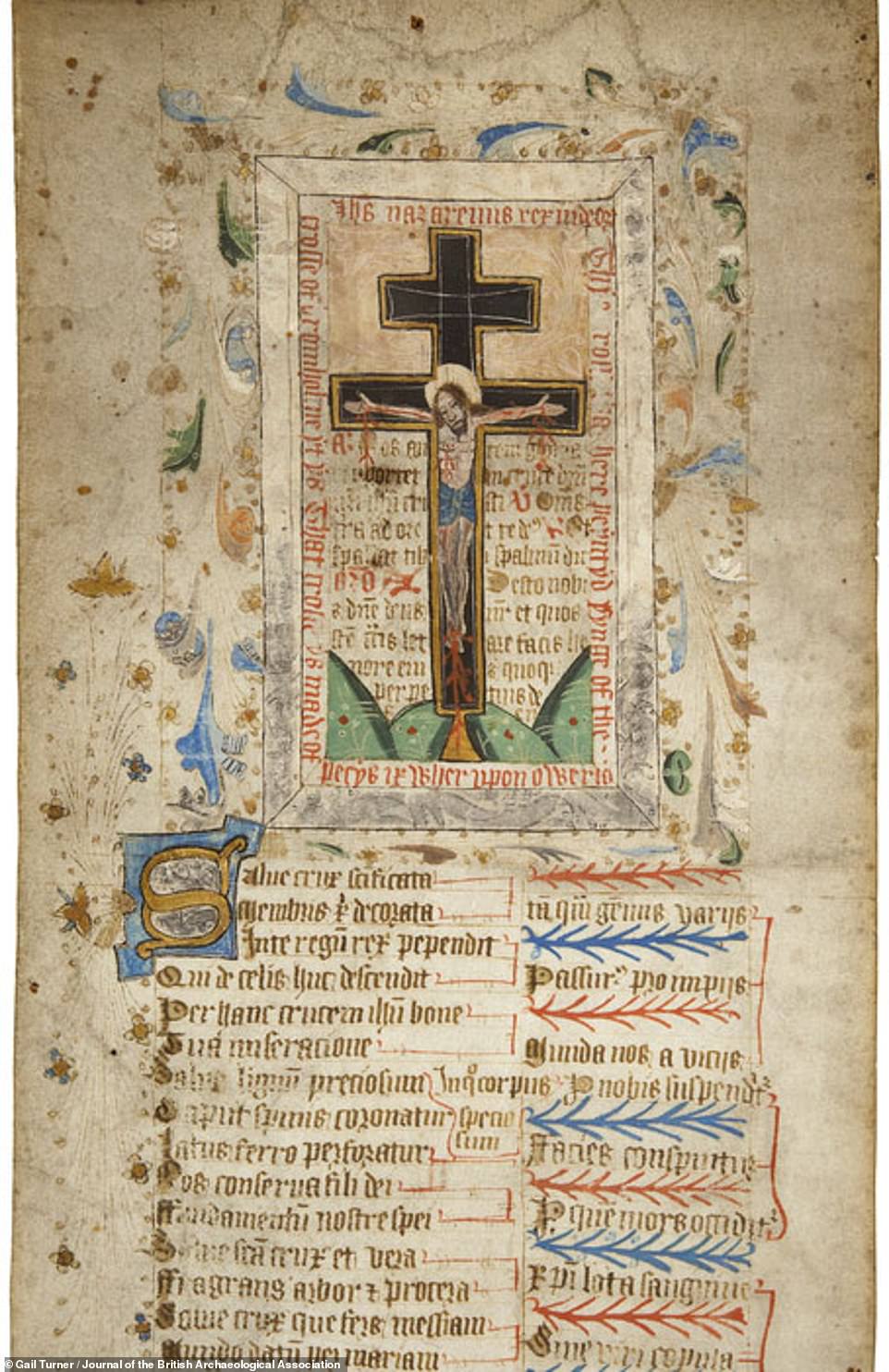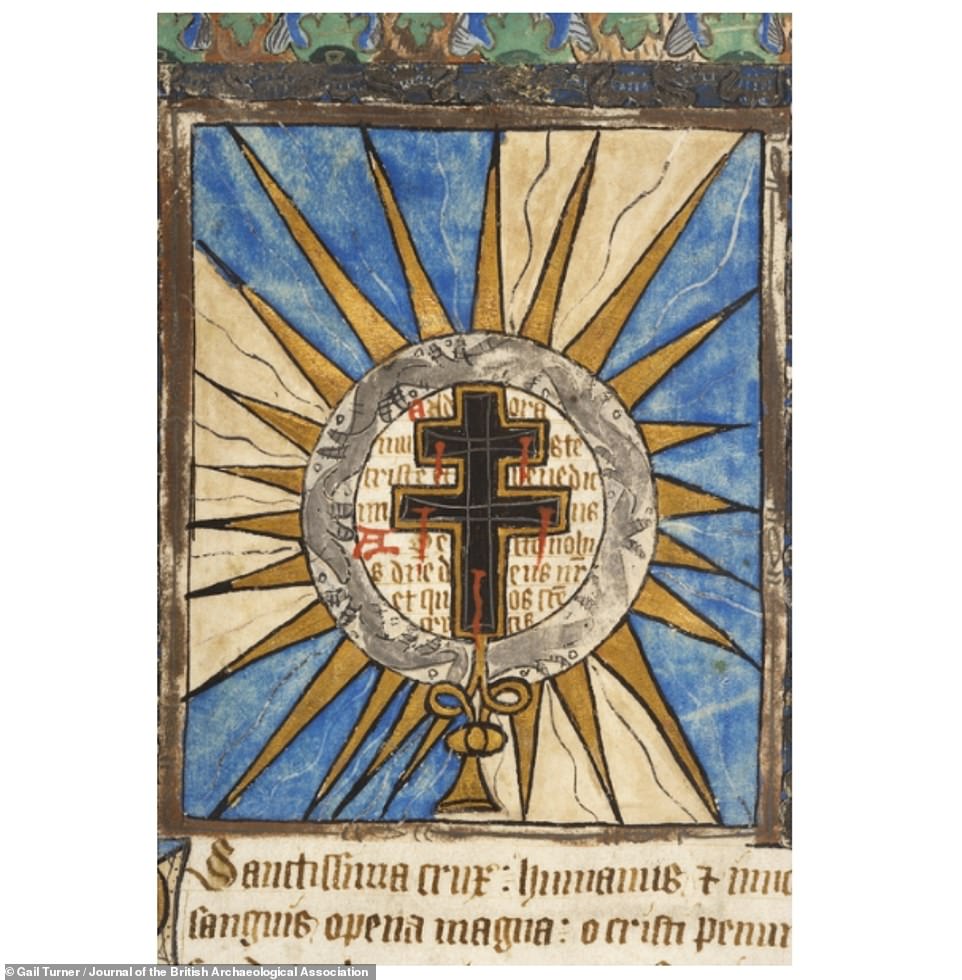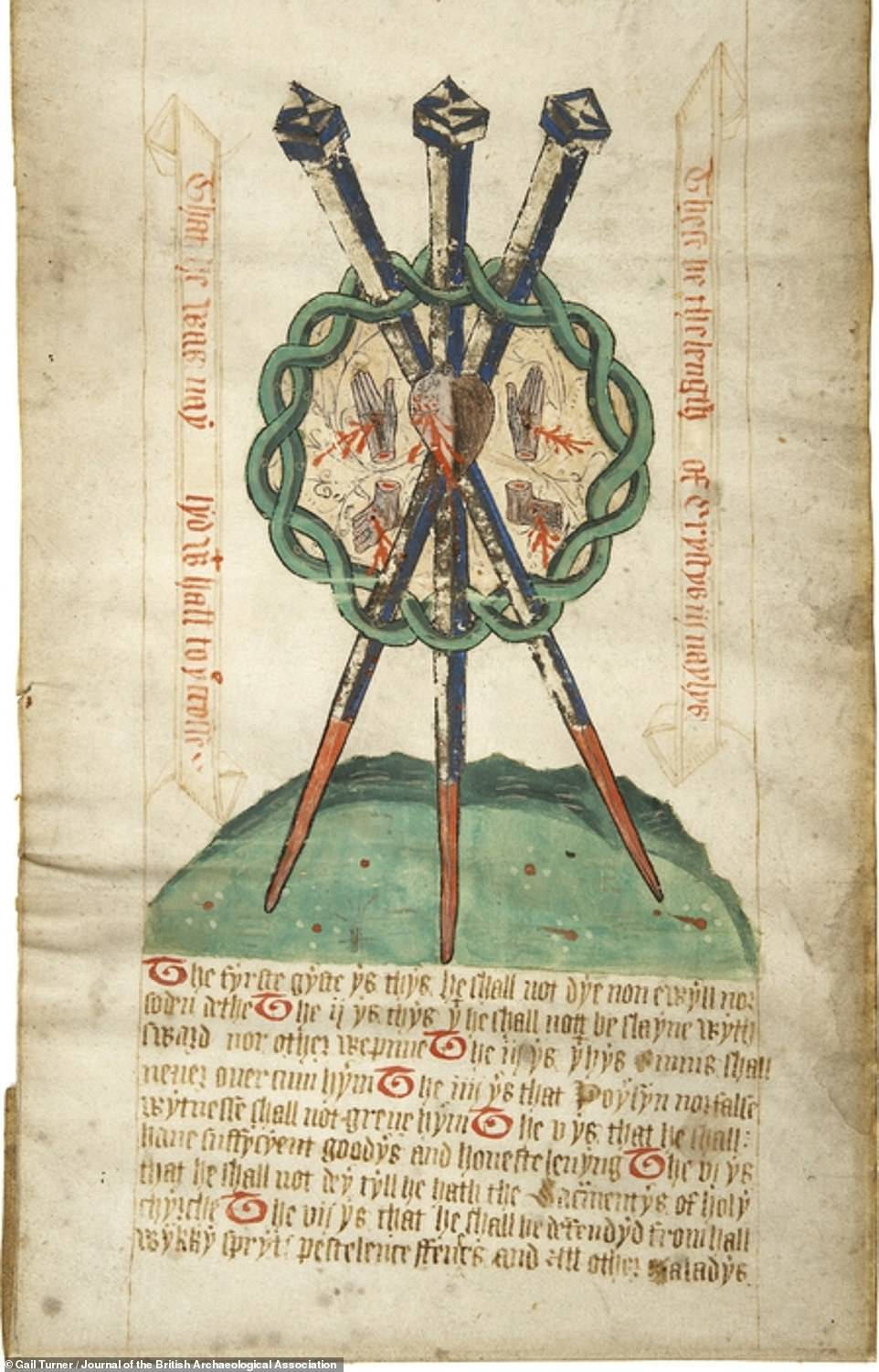The Cross of Bromholm, which allegedly housed a fragment of Jesus' cross and was preserved at a now-defunct monastery in Norfolk, England, is described in an animal-skin manuscript.
The five-inch-long prayer roll has exquisite artwork and designs, as well as imagery and writing that reveal a strong connection to Bromholm Priory, a long-abandoned pilgrimage site in northeast Norfolk where just a few ruins remain.
The priory and wooden relic vanished without a trace after this monastery, founded in 1113, was claimed to house a part of the cross on which Jesus was crucified.
The manuscript also describes Catholic practices before Henry VIII's break with Rome and the Protestant reformation 500 years ago.

Art historian Gail Turner, the author of a new research, said in a statement: 'It [the manuscript] gives insight into the devotional rituals connected to a large crucifix ('Rood') at Bromholm Priory, in Norfolk, and uncovers a direct link between this 16th century artifact and a famous religious relic once associated among Christians with miracles.'
The prayer roll is not a new find; it initially surfaced in the 1960s and 1970s, but Turner is the first to attempt to translate the text and pictures.
She deduced from the examination that the manuscript, which was made from two pieces of vellum (animal skins) sewed together, belonged to a wealthy pilgrim.
'The roll reflects a time when the laity (non-clergy) had a real belief in both visible and invisible enemies,' said Turner.

'For their owners, prayer rolls…were prized as very personal inspirations to prayer, although during the Reformation and after they were commonly undervalued and dismissed.
'The survival of such a magnificent roll for over 500 years is therefore remarkable.'
There are also signs of abrasion throughout the roll that coincide with the idea that worshippers regularly touched or kissed images of Jesus on the cross in an attempt, according to Turner, 'to experience Christ's Passion more directly and powerfully'.
'Indeed, the historian reveals abrasion marks are visible on the Bromholm roll where the owner has engaged in such a 'devotional act identified in other similar rolls.'

Other images of the roll include three nails stabbing through a heart, with hands to the side that also have stab wounds on the palms.
'The ends of the nails are red, as if with blood, and are painted against a background of a green 'hill', presumably Golgoth, Turner wrote in the study published in the British Archaeological Association.
'As in the Coverham roll mentioned above, the Crown of Thorns (stylized and not to scale) is interwoven with the nails, and here encompasses images of the Five Wounds of Christ — hands, feet and side/heart, all of which drip blood.'
According to a letter written in 1537 to Thomas Cromwell by Sir Richard Southwell, a courtier from Norfolk, the priory is in ruins in a field near the village of Bacto, and the study suggests the Rood of Bromholm may be found in London.
The wooden relic is supposed to have been received by Bromholm Priory by an English chaplain fleeing the destruction of Constantinople in 1204.












